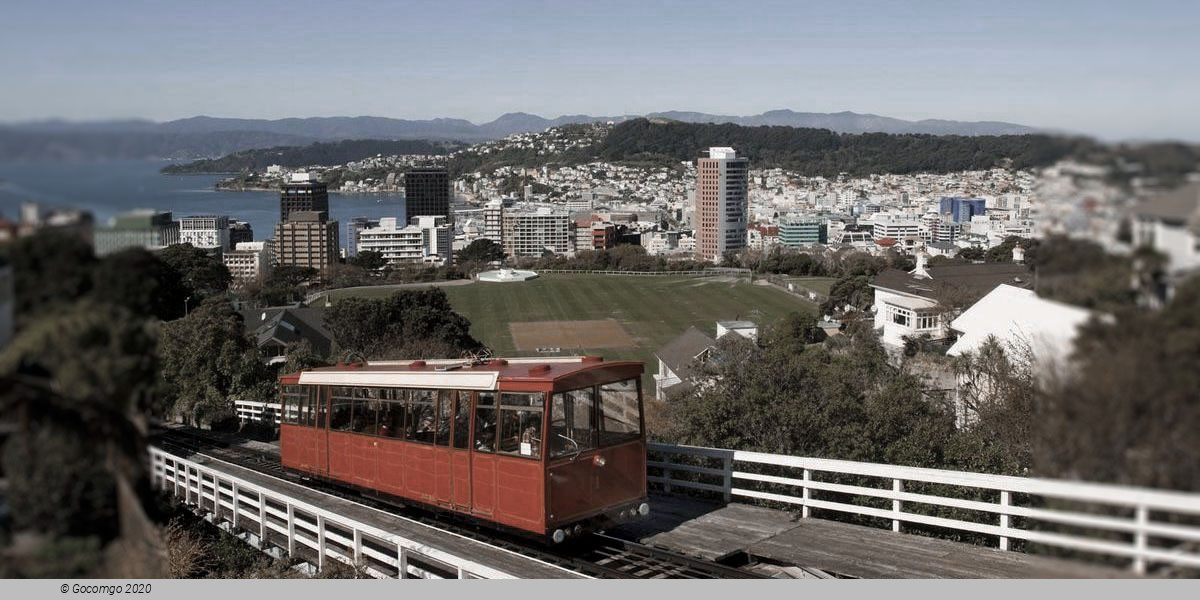Wellington

Wellington is the capital city of New Zealand. It is located at the south-western tip of the North Island, between Cook Strait and the Remutaka Range. Wellington is the major population centre of the southern North Island, and is the administrative centre of the Wellington Region, which also includes the Kapiti Coast and the Wairarapa. It is the world's southernmost capital of a sovereign state. Wellington features a temperate maritime climate, and is the world's windiest city by average wind speed.
History
Māori settlement
Legends recount that Kupe discovered and explored the region in about the 10th century. Before European colonisation, the area in which the city of Wellington would eventually be founded was seasonally inhabited by indigenous Māori. The earliest date with hard evidence for human activity in New Zealand is about 1280.
Wellington and its environs have been occupied by various Māori groups from the 12th century. The legendary Polynesian explorer Kupe, a chief from Hawaiki (the homeland of Polynesian explorers, of unconfirmed geographical location, not to be confused with Hawaii), was said to have stayed in the harbour from c. 925. A later Māori explorer, Whatonga, named the harbour Te Whanganui-a-Tara after his son Tara. Before the 1820s, most of the inhabitants of the Wellington region were Whatonga's descendants.
At about 1820, the people living there were Ngāti Ira and other groups who traced their descent from the explorer Whātonga, including Rangitāne and Muaūpoko. However, these groups were eventually forced out of Te Whanganui-a-Tara by a series of migrations other iwi (Māori tribes) from the north. The migrating groups were Ngāti Toa, which came from Kāwhia, Ngāti Rangatahi, from near Taumarunui, and Te Atiawa, Ngāti Tama, Ngāti Mutunga, Taranaki and Ngāti Ruanui from Taranaki. Ngāti Mutunga later moved on to the Chatham Islands. The Waitangi Tribunal has found that at the time of the signing of the Treaty of Waitangi in 1840, Te Atiawa, Taranaki, Ngati Ruanui, Ngati Tama, and Ngati Toa held mana whenua interests in the area, through conquest and occupation.
Early European settlement
Steps towards Pākehā (European) settlement in the area began in 1839, when Colonel William Wakefield arrived to purchase land for the New Zealand Company to sell to prospective British settlers. Prior to this time, the Māori inhabitants had had contact with Pākehā whalers and traders.
European settlement began with the arrival of an advance party of the New Zealand Company on the ship Tory on 20 September 1839, followed by 150 settlers on the Aurora on 22 January 1840. Thus the Wellington settlement preceded the signing of the Treaty of Waitangi (on 6 February 1840). The 1840 settlers constructed their first homes at Petone (which they called Britannia for a time) on the flat area at the mouth of the Hutt River. Within months that area proved swampy and flood-prone, and most of the newcomers transplanted their settlement, which had been planned without regard for a hilly terrain, across Wellington Harbour to Thorndon in the present-day site of Wellington city.
National capital
Wellington was declared a city in 1840, and was chosen to be the capital city of New Zealand in 1865.
Wellington became the capital city in place of Auckland, which William Hobson had made the capital in 1841. The New Zealand Parliament had first met in Wellington on 7 July 1862, on a temporary basis; in November 1863, the Prime Minister of New Zealand, Alfred Domett, placed a resolution before Parliament in Auckland that "... it has become necessary that the seat of government ... should be transferred to some suitable locality in Cook Strait [region]." There had been some concerns that the more populous South Island (where the goldfields were located) would choose to form a separate colony in the British Empire. Several commissioners (delegates) invited from Australia, chosen for their neutral status, declared that the city was a suitable location because of its central location in New Zealand and its good harbour; it was believed that the whole Royal Navy fleet could fit into the harbour. Wellington's status as capital is a result of constitutional convention rather than statute.
Wellington is New Zealand's political centre, housing the nation's major government institutions. The New Zealand Parliament relocated to the new capital city, having spent the first ten years of its existence in Auckland. A session of parliament officially met in the capital for the first time on 26 July 1865. At that time, the population of Wellington was just 4,900.
The Government Buildings were constructed at Lambton Quay in 1876. The site housed the original government departments in New Zealand. The public service rapidly expanded beyond the capacity of the building, with the first department leaving shortly after it was opened; by 1975 only the Education Department remained, and by 1990 the building was empty. The capital city is also the location of the highest court, the Supreme Court of New Zealand, and the historic former High Court building (opened 1881) has been enlarged and restored for its use. The Governor-General's residence, Government House (the current building completed in 1910) is situated in Newtown, opposite the Basin Reserve. Premier House (built in 1843 for Wellington's first mayor, George Hunter), the official residence of the prime minister, is in Thorndon on Tinakori Road.
Over six months in 1939 and 1940 Wellington hosted the New Zealand Centennial Exhibition, celebrating a century since the signing of the Treaty of Waitangi. Held on 55 acres of land at Rongotai it featured three exhibition courts, grand Art Deco-style edifices and a hugely popular three-acre amusement park. Wellington attracted more than 2.5 million visitors at a time when New Zealand's population was 1.6 million.

